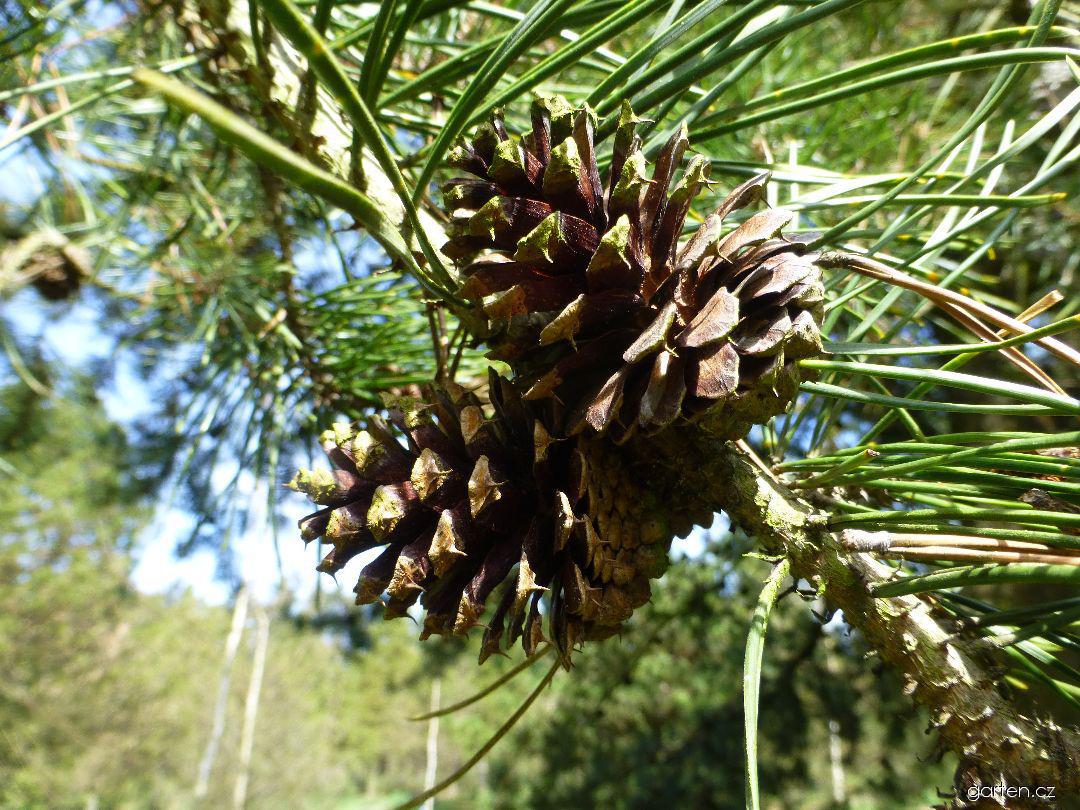Pinus × murraybanksiana, as described in 1949 by William Palmer Stockwell (1898-1950) and Francis Irving Righter (1897 - ?), in Madroño 10(69), is commonly known as Murraybanks pine. The species name is an amalgam of the two parent species; it described natural and synthetic hybrids of Jack pine (Pinus banksiana) and lodgepole pine (Pinus contorta). The natural hybrids from the Canadian Rocky Mountains involve lodgepole pine (Pinus contorta var. latifolia), while the synthetic hybrids created in California where done so using the local Sierra Nevada tree, Pinus contorta var. murrayana. The California synthetic hybrid is the tree which provided the type that was selected at Eddy Arboretum, Placerville, California in the 1940s and named by Stockwell and Righter.
Description. Murraybanks pine is an evergreen coniferous tree that grows to mature heights of 80 feet (25 m) or more with varying resemblance to both parent species. Since the parents are superficially similar, the hybrids have few characteristic features with the exception of expected hybrid vigor; Murraybanks pine tends to grow faster than both parent species.
Distribution. The natural hybrids are restricted to the region of overlap of the parent species in the foothills of the Rocky Mountains in western Canada, mostly Alberta. Although they also exist in Northwest Territories, they have not been extensively studied.
Hardy to USDA Zone 3 - cold hardiness limit between -40° and -30°F (-39.9° and -34.4°C).
